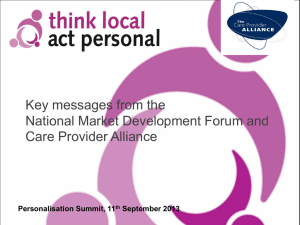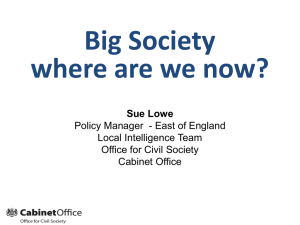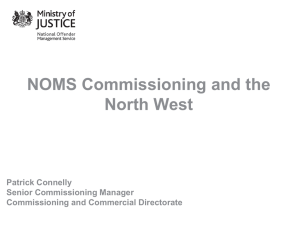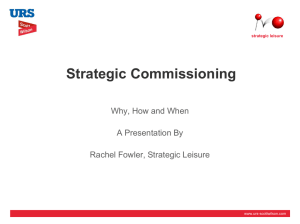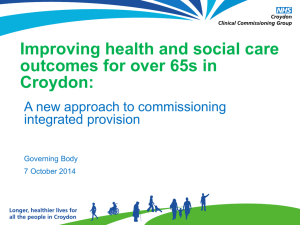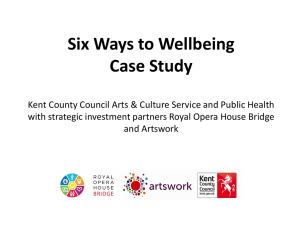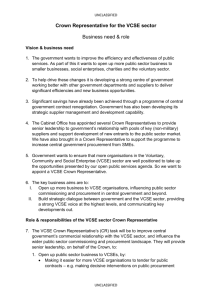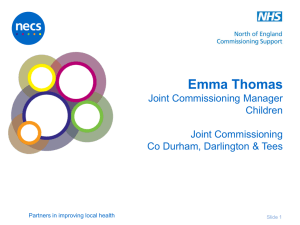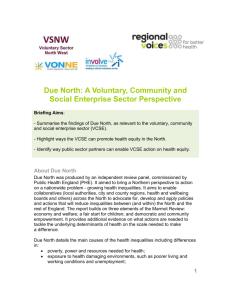Michael O`Toole - VCSE delivery of public services and
advertisement
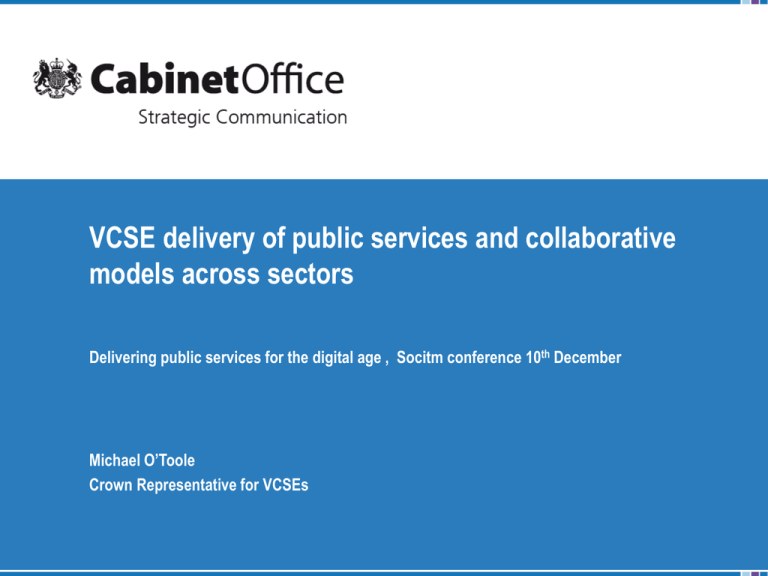
VCSE delivery of public services and collaborative models across sectors Delivering public services for the digital age , Socitm conference 10th December Michael O’Toole Crown Representative for VCSEs Strategic objectives for my role • Open up more business to VCSE organisations, influence public sector commissioning and procurement • Build strategic dialogue between government and the VCSE sector – Provide strong VCSE voice at the highest levels and communicate key developments out • Open up public sector business to VCSEs, by: – – – – Make it easier for more VCSEs to tender for public contracts – remove barriers Decisive interventions on major commercial opportunities Help VCSEs take services to the public sector market Understand and develop VCSE skills and capacity to win and deliver public service contracts 2 VCSEs in public services market Charities income £14.2bn from government in 2011, 37% of total income to the sector... 37 % he public sector income mix for VCSEs is changing; income from contracts has increased at the same time as grant income has decreased. 50% from local commissioning 45% Central Government / Health 5% European and International sources. Grant Income £3.0 78% is contract income 22% is from grants 22% £4.2 78% Contract Income £4.4 £11.2 £7.9 £4.3 2000/01 2005/06 2010/11 Statutory contracts Statutory grants 3 UNCLASSIFIED VCSE advantages for public service buyers • Core focus on beneficiaries – proximity to service users & voice, good fit for outcome-focused service commissioning – engagement with communities, especially harder to reach – understand needs and local response to local problems • Not-for-profit – may reduce cost, cultural fit with public sector & helps focus on meeting customer needs • Social action resource – mobilise volunteering & campaigns • VCSEs inherently deliver positive social value – meet commissioners’ needs re social value act • Social purpose enables genuine open engagement, partnership approach – flexibility to work in different models (collaboratives, mutuals, etc) and creates options for co-design 4 Key issues for VCSEs in commissioning • Commissioning of public services in a tough economic environment . • Commissioning is often large scale, financially risky and complex – expertise, financial scale, cash flow requirements • Commissioning through contracting (subcontracting) may represent rapid change – financial risk, shift from grant to contract • Commissioners may not recognise the strengths of the VCSE offer or understand their nature sufficiently well • VCSEs may not have skills, governance, culture, access to finance to succeed in this environment – operating in a more commercial, competitive environment 5 Overcoming potential obstacles to VCSEs • Commissioning environment has changed rapidly & fiscal pressure– – genuine innovation with VCSEs playing part in service redesign/co-design, demand prevention and new models (public/VCSE partnerships & mutuals) – transparency (commissioning pipelines) & pre-market engagement – capacity & capability building • Commissioning for products and services is large scale – – – – – lotting strategy allow for new models of delivery (collaboration) supply chain strategy & market stewardship social financial role • Commissioning for products and services is complex – – simplification of procurement process Overcoming potential obstacles to VCSEs • VCSE engagement in commissioning – be part of the conversation & understand policy and commissioning intentions – meet commissioners and ‘get on the radar’ – read and respond to policy consultations – help commissioner shape their specification during informal pre-market engagement – Consider ‘new models’ Some Government initiatives & support • Funding – Investment & Contract Readiness Fund, Social Action Fund, Social Outcomes Fund • Capability building – VCSE Commercial Masterclassess, Commissioning Academy • Transparency – Contracts Finder, pipelines, Supplier Feedback Service • Compact 8 UNCLASSIFIED Thank-you • Please follow me on Twitter: otoole_michael 9 UNCLASSIFIED
